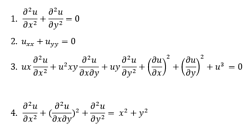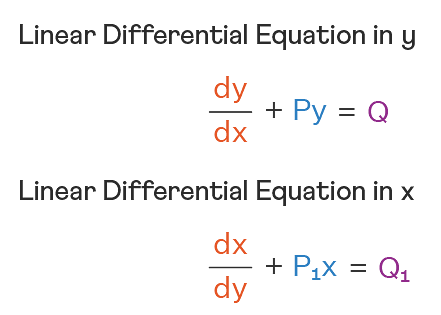20 mL of 0.02 M K2Cr2O7 solution is used for the titration of 10 mL of Fe2+ solution in the acidic medium. The molarity of Fe2+ solution is ______×10–2 M. (Nearest integer)
Correct Answer: 24
Solution and Explanation
Applying the law of equivalence,
milliequivalents of Fe2+ = milliequivalents of K2Cr2O7
10 × 1 × M = 20 × 6 × .02
M = 24 × 10–2 M
∴ Answer will be 24.
Top Questions on Chemical Reactions of Alcohols Phenols and Ethers
Calculate the potential for half-cell containing 0.01 M K\(_2\)Cr\(_2\)O\(_7\)(aq), 0.01 M Cr\(^{3+}\)(aq), and 1.0 x 10\(^{-4}\) M H\(^+\)(aq).
- CBSE CLASS XII - 2025
- Chemistry
- Chemical Reactions of Alcohols Phenols and Ethers
- Phenol can be distinguished from propanol by using the reagent
- KCET - 2025
- Chemistry
- Chemical Reactions of Alcohols Phenols and Ethers
- Find out the final product C

- JEE Main - 2024
- Chemistry
- Chemical Reactions of Alcohols Phenols and Ethers
- An aqueous solution of hydrazine (\(N_2H_4\)) is electrochemically oxidized by \(O_2\), thereby releasing chemical energy in the form of electrical energy. One of the products generated from the electrochemical reaction is \(N_2(g)\). Choose the correct statement(s) about the above process:
- JEE Advanced - 2024
- Chemistry
- Chemical Reactions of Alcohols Phenols and Ethers
- According to Bohr's model, the highest kinetic energy is associated with the electron in the:
- JEE Advanced - 2024
- Chemistry
- Chemical Reactions of Alcohols Phenols and Ethers
Questions Asked in JEE Main exam
- The molarity of a 70%(mass/mass) aqueous solution of a monobasic acid (X) is:
- JEE Main - 2025
- Molality and Molarity
- Consider the following sequence of reactions:
i) \( \text{Mg}, \text{dry ether} \)
ii) \( \text{CO}_2, \text{H}_2\text{O}^+ \)
iii) \( \text{NH}_3, \Delta \)
11.25 mg of chlorobenzene will produce \( x \times 10^{-1} \) mg of product B. Given molar mass of C, H, O, N, and Cl as 12, 1, 16, 14, and 35.5 g mol\(^{-1}\), respectively, the value of \( x \) is:- JEE Main - 2025
- Organic Reactions
Let $f: \mathbb{R} \to \mathbb{R}$ be a continuous function satisfying $f(0) = 1$ and $f(2x) - f(x) = x$ for all $x \in \mathbb{R}$. If $\lim_{n \to \infty} \left\{ f(x) - f\left( \frac{x}{2^n} \right) \right\} = G(x)$, then $\sum_{r=1}^{10} G(r^2)$ is equal to
- JEE Main - 2025
- Functions
Let $A$ and $B$ be two distinct points on the line $L: \frac{x-6}{3} = \frac{y-7}{2} = \frac{z-7}{-2}$. Both $A$ and $B$ are at a distance $2\sqrt{17}$ from the foot of perpendicular drawn from the point $(1, 2, 3)$ on the line $L$. If $O$ is the origin, then $\overrightarrow{OA} \cdot \overrightarrow{OB}$ is equal to:
- JEE Main - 2025
- 3D Geometry
- Given below is the plot of the molar conductivity vs \( \sqrt{c} \) concentration for KCl in aqueous solution. If, for the higher concentration of KCl solution, the resistance of the conductivity cell is 100 \( \Omega \), then the resistance of the same cell with the dilute solution is 'x' \( \Omega \). The value of \( x \) is:
- JEE Main - 2025
- Thermodynamics
Concepts Used:
Types of Differential Equations
There are various types of Differential Equation, such as:
Ordinary Differential Equations:
Ordinary Differential Equations is an equation that indicates the relation of having one independent variable x, and one dependent variable y, along with some of its other derivatives.
\(F(\frac{dy}{dt},y,t) = 0\)
Partial Differential Equations:
A partial differential equation is a type, in which the equation carries many unknown variables with their partial derivatives.

Linear Differential Equations:
It is the linear polynomial equation in which derivatives of different variables exist. Linear Partial Differential Equation derivatives are partial and function is dependent on the variable.

Homogeneous Differential Equations:
When the degree of f(x,y) and g(x,y) is the same, it is known to be a homogeneous differential equation.
\(\frac{dy}{dx} = \frac{a_1x + b_1y + c_1}{a_2x + b_2y + c_2}\)
Read More: Differential Equations